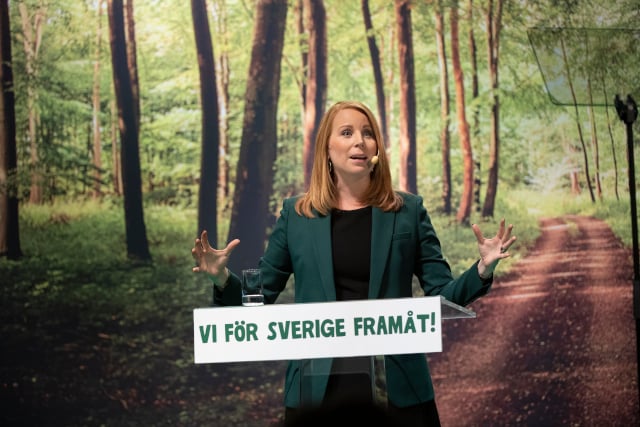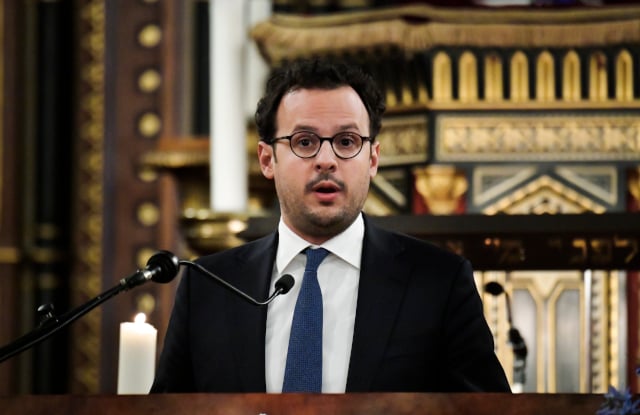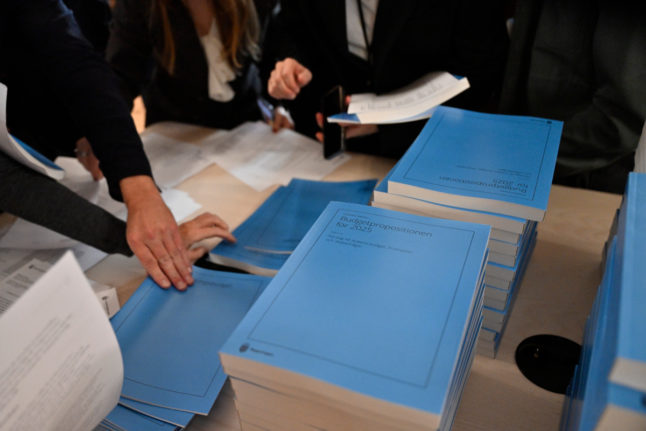What happened?
Sweden's Centre Party voted in favour of banning circumcision (omskärelse) of boys in the absence of a medical reason, during the party's annual meeting in Karlstad at the weekend.
The main purpose of the meeting was to vote on the party's official stance in several social issues, including whether to remove restrictions on blood donations from gay and bisexual men (this proposal was rejected) and whether to introduce legal recognition of a third gender (this proposal was accepted).
The decision on circumcision, taken by party commissioners, went against the official party line, and Centre Party leader Annie Lööf has said she “regrets” the outcome.
The Centre Party is not currently in government, but is part of a four-party deal, along with the Liberal Party, which allows the centre-left Social Democrats and Green Party to govern.
What does the party decision mean?
Despite being unanimously rejected by the party board (partistyrelse) which is made up of Lööf and 18 other high-ranking Centre Party politicians, the rejection was overturned by party commissioners (ombud) who voted in favour of the ban by 314 to 166 votes.
However, the final decision was that the party should work to ban all non-medical circumcisions of boys, rather than a total ban on circumcision which some party members had advocated for.
Following the meeting, party vice chairman Anders W Jonsson told press: “This was not a decision that the party leadership wanted.” He said that those who called for a ban on circumcision were focused on child rights, and that the debate had not been related to religion.
“This isn't something we plan to write a motion on,” said Lööf on Sunday.
The next step, according to her, is for the party board to analyze the decision made at the meeting and work out the best way for the party to “work towards” such a ban, in line with the decision.
Even if the party did end up submitting a motion to ban circumcision, it's unlikely it would get far. In the lead-up to 2018's election, both the far-right Sweden Democrats (SD) and the Left Party told Sweden's Judisk Krönika they were in favour of an 18-year age limit on the procedure. No other party said it would support such a policy or any other kind of ban or restriction, although the Green Party described male circumcision as “problematic”.

Annie Lööf addressing the Centre Party conference on Thursday. Photo: Tommy Pedersen/TT
What was the reaction?
Both Jewish and Muslim groups criticized the party decision.
Aron Verständig, chairperson of The Official Council of Swedish Jewish Communities, told the Expressen newspaper: “I am very surprised and very disappointed. This means, if the proposal becomes reality, that it will be completely impossible to live as a Jew or a Muslim in Sweden.”
Lööf said she “understood” the criticism and had been in contact with both Jewish and Muslim leaders in Sweden.
“For us, it's an important question to protect freedom of religion and we stand behind that 100 percent,” she said.
What are Sweden's existing laws on circumcision?
Since 2001, Swedish law has stated that boys may only be circumcised by a qualified medical practitioner or a person who has been licensed by the National Swedish Board of Health and Welfare. There is no rule governing the motivations for circumcision, but it is required to give the boy as much information as possible and clarify his own wishes, and not to carry out the procedure against his will.
In a parliamentary motion in 2007/2008, Lööf herself called for the law banning genital mutilation of women to be made gender-neutral, in order to cover circumcision of boys without medical motivation. However, she has since said that she has changed her mind on this.

Aron Verständig, head of a major Swedish Jewish association, criticized the move. Photo: Janerik Henriksson/TT
How does the situation in Sweden compare with other countries?
Rates of circumcision vary across the world. It is most common in Muslim countries and regions and Israel, while rates are low in most of Europe as well as Asia, Latin America, and parts of southern Africa.
In the US, a majority of adult men are circumcised but rates of neonatal circumcision have fallen in recent years.
In Germany, a court ruling in 2012 stirred up debate when a Cologne court said the religious circumcision of a young boy amounted to illegal grievous bodily harm. However, lawmakers voted later in the year to keep the practice legal when carried out by a medically trained professional. And last year in Denmark, a petition calling for a ban on male circumcision went to parliament, but lost political support later the same year.



 Please whitelist us to continue reading.
Please whitelist us to continue reading.
Member comments